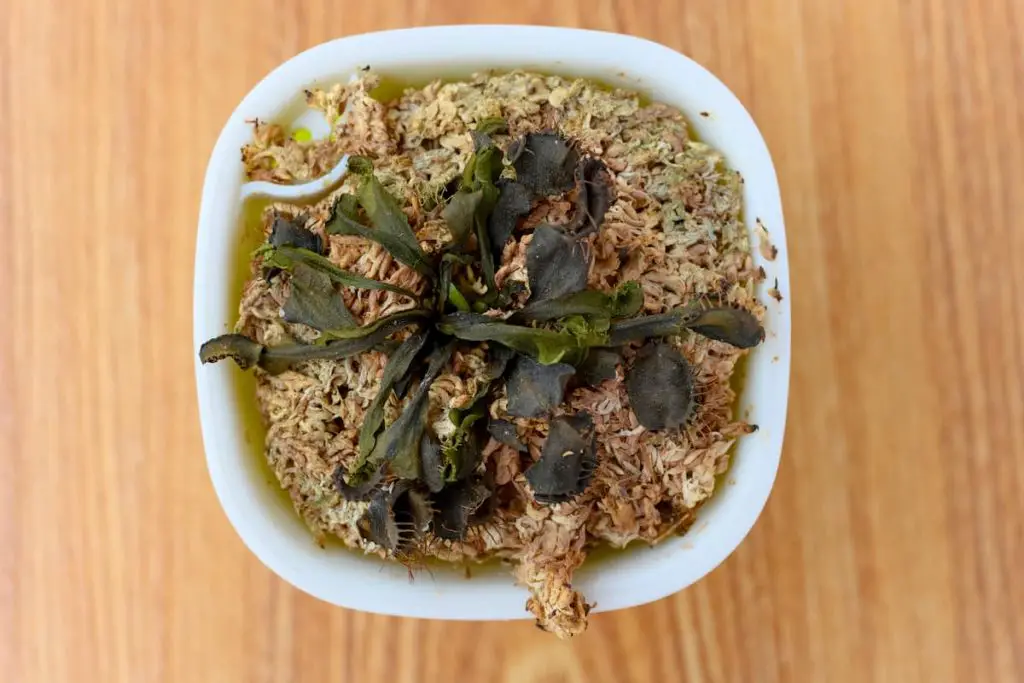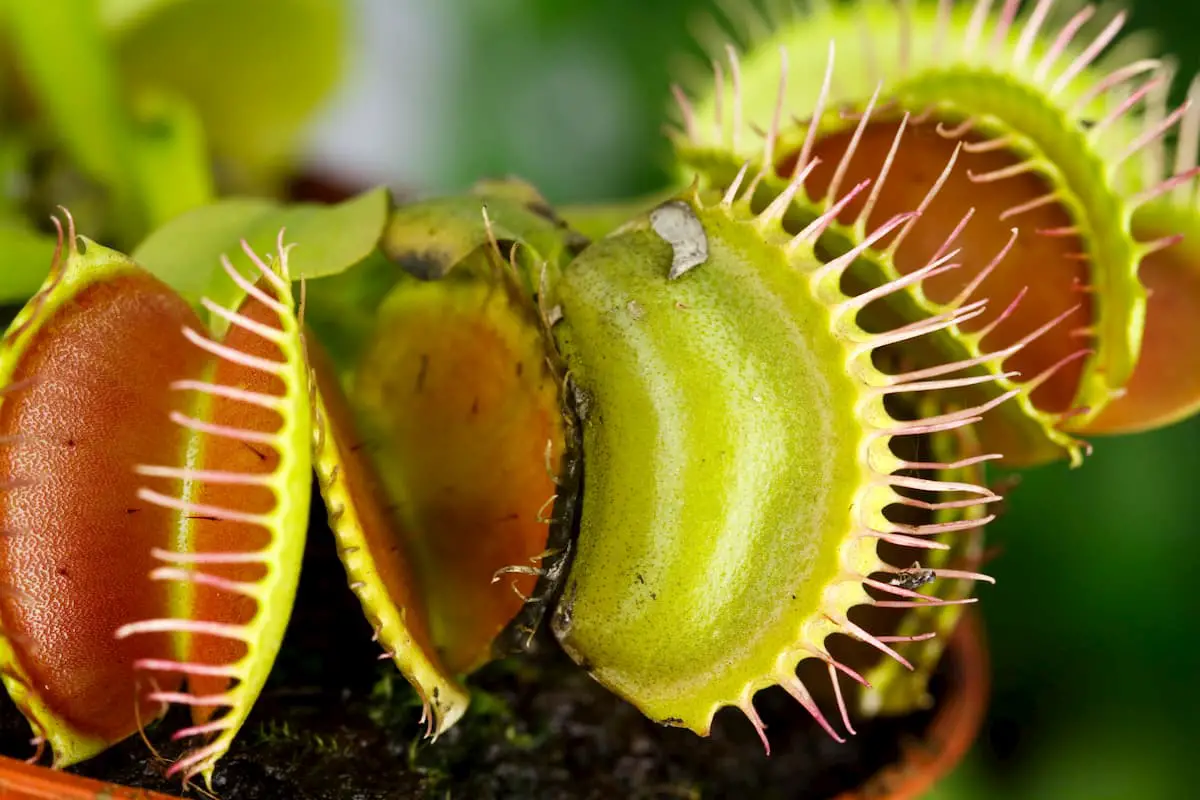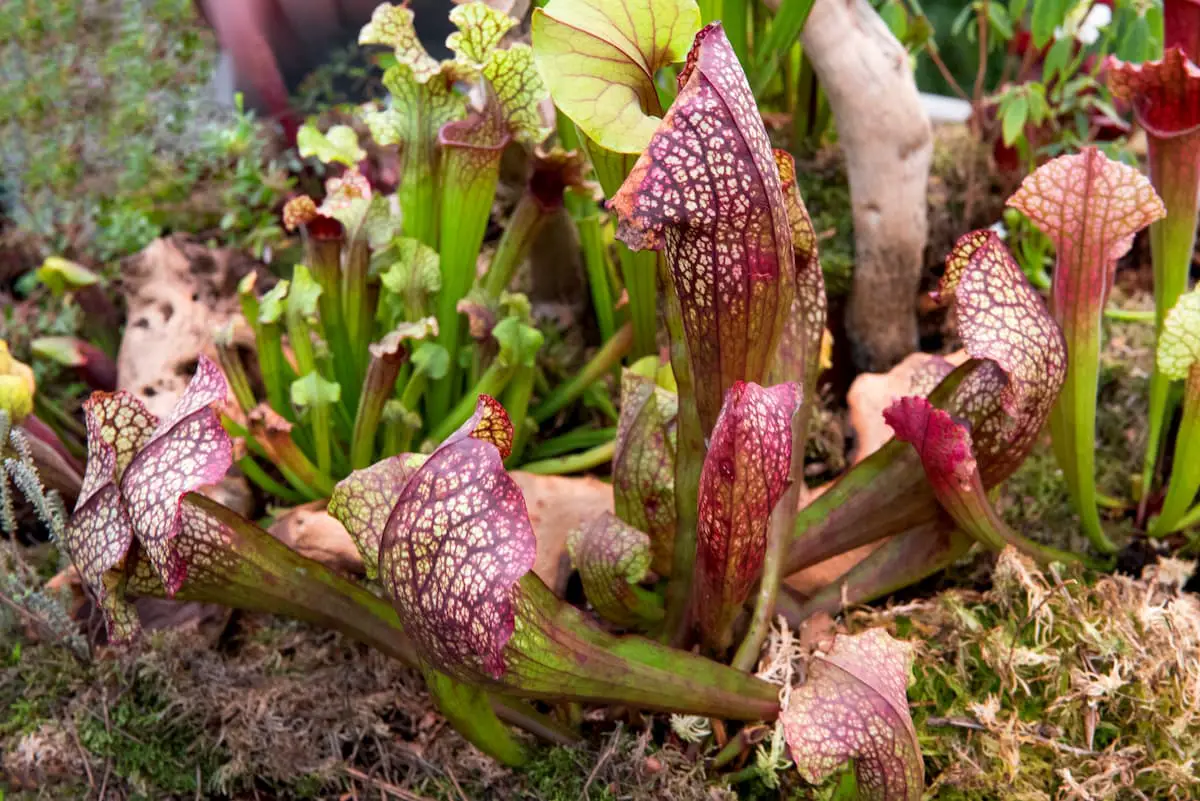One issue many Venus flytrap owners will experience frequently is the traps turning black, for many this may induce some panic that the plant is dying. The one thing I can tell you is to relax, it is not as serious as you may think but it could be heading that way.
Why is my Venus fly trap turning black? The Venus flytrap leaves (or traps) only can open and close a set amount until their energy reserves are used, when this happens they turn black, die, and fall off. This is a natural process and is healthy for your plant in most circumstances.
Since we now know that this is a normal and healthy part of a Venus flytrap life span lets take a look into why they turn black along with other causes that are more serious to your overall plants health and well being.
Why to Flytraps Turn Black?
Just like every animal and plant on the planet each Venus flytrap has a life span which has a beginning and an end. The typical trap on the plant will have a full life span of about 3 months and while it may look bad when they turn its just the end of a natural cycle.
When you want to start paying more attention to your Venus flytrap is when you find multiple traps dying around the same time or earlier than the 3 month timetable.
You can fix these issues if you catch them early enough and look at your feeding practices and the soil and growing conditions as you can still save the plant if it isn’t too far down the path.
What Are Some Causes of Black Leaves on a Venus Flytrap?
There are a few common causes of why your Venus flytraps leaves will turn black and die off. Each of these could be the cause and you will have to learn your plants to know what is the cause, though note that natural life is only about 3 months per trap.
Since your traps can turn black for many different reasons I have built a list of the 5 most common causes.
Inappropriate Food
Many seem to think a Venus flytrap can be fed anything and it will use it, this can be anything from bacon, sausage, hamburger, and more. Please stop this as this isn’t the plants natural diet and may end them sooner than natural.
When you are feeding them bugs you need to ensure the bug isn’t bigger than about 1/3 the size of the trap. You see to digest the bug the trap needs to fully seal so if they are too big and stick out they don’t get digested well.
Stress From Poor Growing Conditions
When your growing conditions aren’t ideal this can add stress to the plant which may cause the traps to turn black whether fed or not, a key to knowing that this is growing conditions can be a yellowing before the black starts.
Some Things To Consider About the Growing Conditions:
- Water: You want to have water that is purified and not full of minerals and other deposits. These minerals and deposits can burn (damage) the roots of your plant causing premature death. You can check levels with a TDS reader.
- Light: Venus flytraps love full sun exposure, when they are in darker areas this will cause premature blackening on their traps.
- Soil: This is a common issue for new carnivorous plant owners as most plants need fertilized soil. Venus flytraps require a nutrient-poor soil to thrive as they would have in nature. Here is our post on creating proper soil.
Overfeeding
This is a frequent issue with Venus flytrap owners, and more specifically newer flytrap owners. What most new Venus flytrap owners don’t know is that there is a finite amount of energy available to traps and once used the trap is discarded.
This is why you NEVER want to fire off traps without food being offered as each empty close utilizes energy that it doesn’t get back as there is no food.
Additionally you want to feed only a trap at a time, you don’t need, and the plant doesn’t need, food added to each trap to survive. Rotate through traps and feed the plant only every week which will help your plant to thrive.
You should also think about putting your Venus flytrap outside to give it a chance to catch food fully naturally, this will also get them some nice exposure to the elements outside like direct sun.
Winter Dormancy
Venus flytraps will go through a period of dormancy to help extend their lives, this is due to the temperate areas they come from. This is due in large part to the daylight hours shortening while additionally the temperature drops.
This change is completely normal and due to it some traps will go black and die as your plant starts the winter resting phase. If you are in the northern hemisphere, this period will typically last from November to February. We cover dormancy for winter over in this post.
Just keep in mind that dormancy is a normal process and that you can start to clean of the black traps and slow down on overall watering while it is in this phase.
Natural Lifecycle
When the older traps are turning black or the trap turning black has caught and digested several insects then it is most likely a normal part of the life cycle. When you look, if your plant is putting out new trap growths to replace the old ones then you have a healthy plant and nothing to worry about.

How Do I know if My Venus Flytrap is Dying?
This really has nothing to do with black traps on your plant, the traps are just a part of your plant. What s needed to check for dying or dead plants is to focus on the plant core instead.
The best way to check on whether your plant is dying or dead is to check the rhizome state. The rhizome is the part that is between the leaves and the roots which is just under the soil.
If it is black and mushy your plant is dead and not recoverable, if it is instead white and firm to the touch then the plant is alive.
Should I Cut Off Black Venus Flytraps?
While it may seem like the black parts will spread through the entire plant this is not in fact how this happens. The black traps are at the end of their natural life and will turn black and decompose themselves.
The only reason you would need to cut off the black leaves is more a personal perception and would be about aesthetics more than a need.
Should you choose to cut off the dying or dead trap you want to make sure you cut at the black and NOT at the green live section of your plant.
The only time you may want to choose to cut off the black traps should be if you see mold growing on the plant, though this isn’t from the dying part of the plant but more about feeding and soil conditions.
Mold can spread across the entire plant and end its life abruptly, this should be taken seriously when found to ensure you extend your plant to its full life cycle.
When you become a skilled carnivore gardener you will typically not remove any dead leaves until the end of the season when growing has ended and it is easy to clean up.
What to do With a Venus Flytrap When New Growth is Turning Black
This can be due to the seasons changing rapidly and the plant isn’t able to adapt in time, while it may appear bad the plant will adapt to this change and come back from it without issue.
Additionally this could a symptom of over-watering or possibly over exposure to sunlight, you will need to weigh everything you are doing with your plant as you should be looking for a minimum of 4 hours of sunlight.

Final Thoughts
Hopefully this has given you more peace of mind in your carnivore gardening with Venus flytraps. While the blackening may worry you it is part of their circle of life and shows in most cases that your plant is very healthy.
Take time to evaluate if it is widespread on your plant but if not widespread just maintain and you will see the plant regrow new traps in their place with the ability to eat more and continue to grow and thrive!




Leave a Reply